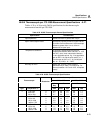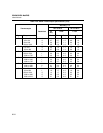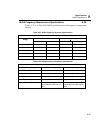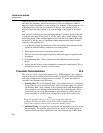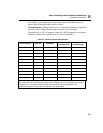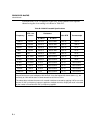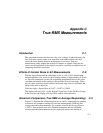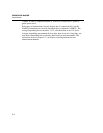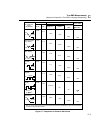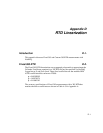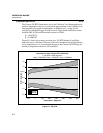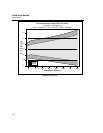C-1
Appendix C
True-RMS Measurements
Introduction C-1.
The instrument measures the true rms value of ac voltages. In physical terms, the
rms (root-mean-square) value of an waveform is the equivalent dc value that
causes the same amount of heat to be dissipated in a resistor. True rms
measurement greatly implies the analysis of complex ac signals. Since the rms
value is the dc equivalent of the original waveform, it provides a reliable basis for
comparing dissimilar waveforms.
Effects of Internal Noise in AC Measurements C-2.
With the input shorted and the instrument set for ac volts (VAC) measurement,
internal amplifier noise causes a typical display reading of approximately 0.50 mV
ac. Since the instrument is a true rms responding measurement device, this noise
contributes minimally to the readings at the specified floor of each range. When
the rms value of the two signals (internal noise and range floor) is calculated, the
effect of the noise is shown as:
Total rms digits = Square Root of (0.50
2
+ 15.00
2
) = 15.008
The display will read 15.01. At the 28.00 mV input level on the 300.00 mV range
in the slow rate, the display will read 28.00 with no observable error.
Waveform Comparison (True RMS vs Average Responding) C-3.
Figure C-1 illustrates the relationship between ac and dc components for common
waveforms and compares readings for true-rms measurements (NetDAQ) and
average-responding measurements. For example, consider the first waveform, a
1.41421V (zero-to-peak) sine wave. Both the instrument and rms-calibrated
average-responding measurement devices display the correct rms reading of



